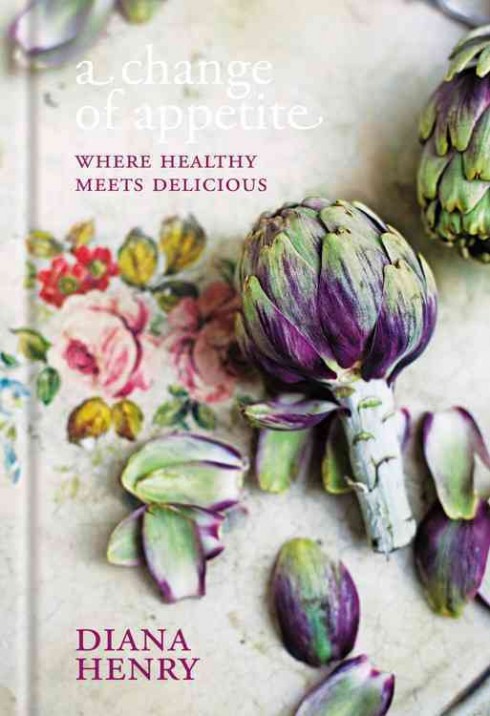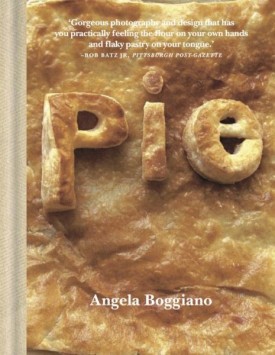A Change of AppetiteWhere Healthy Meets Delicious
What happened when one of today’s best-loved food writers had a change of appetite? What happened when one of today’s best-loved food writers had a change of appetite?
What happened when one of today’s best-loved food writers had a change of appetite? Here are the dishes that Diana Henry created when she started to crave a different kind of diet – less meat and heavy food, more vegetable-, fish- and grain-based dishes – often inspired by the food of the Middle East and Far East, but also drawing on cuisines from Georgia to Scandinavia.
Curious about what ‘healthy eating’ really means, and increasingly bombarded by both readers and friends for recipes that are ‘good for you’, Diana discovered a lighter, fresher way of eating. From a Cambodian salad of prawns, grapefruit, toasted coconut and mint or North African mackerel with cumin to blood orange and cardamom sorbet, the magical dishes in this book are bursting with flavour, goodness and colour. Peppering the recipes is Diana’s inimitable writing on everything from the miracle of broth to the great carbohydrate debate. Above all, this is about opening up our palates to new possibilities. There is no austerity here, simply fabulous food which nourishes body and soul.
Diana Henry was named ‘Cookery Writer of the Year’ by The Guild of Food Writers in 2009 and in 2007 for her column in the Sunday Telegraph‘s Stella magazine. She is a contributor to many magazines including Red, House and Garden, Country Living and Waitrose Food Illustrated. She is the author of a number of bestselling cookbooks, including: Roast Figs Sugar Snow; The Gastropub Cookbook, Cook Simple, Salt Sugar Smoke and Food from Plenty. Diana lives in London with her partner and children.
Everything Diana Henry cooks I want to eat.
— Yotam Ottolenghi
cucumber and yogurt soup with walnuts and rose petals
nectarine, tomato and basil salad with torn mozzarella
tomato, melon, and cucumber salad
teriyaki salmon with pickled vegetables and sesame seeds
cucumber and yogurt soup with walnuts and rose petals
I always love the look—and the idea—of Middle Eastern cucumber soups, but have never tasted one that actually has enough depth of flavor (not for me, anyway). So this isn’t purely Middle Eastern, because I’ve used some stock, which they wouldn’t do, but it has the right spirit: light, healthy, and “green” tasting. I actually prefer it without the dried fruit garnish, but that is traditional.
Serves 8
For the soup
2 cucumbers, peeled and chopped, plus matchsticks of cucumber to serve
1 cup walnuts, plus extra chopped walnuts to serve
4 garlic cloves, chopped
6 scallions, chopped
3 tablespoons chopped mint leaves
3 tablespoons chopped dill leaves, plus extra to serve
pinch of dried red pepper flakes
leaves from 5 sprigs of tarragon
1¾ slices stale white country-style bread, crusts removed, torn
1 cup strong chicken stock
1 cup Turkish yogurt (or Greek, Turkish is thinner)
2⁄3 cup extra virgin olive oil, or to taste
juice of ½ lemon, or to taste
2 tablespoons white balsamic vinegar, or to taste
salt and black pepper
To serve
handful of raisins (optional)
pink or red rose petals
If you will be serving the soup with raisins, put them in a small bowl and cover with just-boiled water. Let stand for 30 minutes to plump them up, then drain.
Put all the ingredients for the soup into a blender, in batches if necessary, and process. You will have to stop every so often and move the ingredients around so that all of them get to be near the blade. Taste for seasoning; this soup needs really careful adjusting. You may find you need a drop more lemon juice or white balsamic or extra virgin oil instead of salt or black pepper.
Chill well, then serve in small bowls, with the raisins (if using), chopped walnuts, cucumber matchsticks, dill, and rose petals.
try a heartier version:
Cucumber soup is wonderfully adapatable and can be dressed in all kinds of ways. Instead of rose petals and walnuts, top this with spoonfuls of Salmon tartare (see page 53) or flaked hot-smoked salmon, or even with chopped, still-warm hard-boiled egg and sautéed shrimp. You could also try replacing the dill in the recipe with basil, and the walnuts with almonds, to make a more Italian soup. Top with finely chopped tomatoes and torn basil leaves mixed into a vinaigrette, or Almond and basil gremolata (see page 98).
nectarine, tomato and basil salad with torn mozzarella
One of the best salads in the book, this shows just how perfumed basil is. You can omit the mozzarella if you are watching your fat intake (although first consider the discussion on fats on pages 284–285), or if you’re not, use burrata, if you can get it, instead of mozzarella (it’s even better).
This is a simple dish, so you do need to buy good-quality ingredie
Serves 6 as an appetizer, 4 as a main course
3 nectarines
10 oz tomatoes of mixed sizes and colors
8 oz buffalo mozzarella, drained of whey
leaves from 1 large bunch of basil
salt and black pepper
1½ tablespoons white balsamic vinegar
3 tablespoons extra virgin olive oil
Halve and pit the nectarines and cut each half into four equal wedges. Halve smaller plum tomatoes or quarter larger ones, and slice the large tomato. Tear the mozzarella coarsely into pieces.
Get a wide, shallow bowl and layer the salad components, seasoning and sprinkling with white balsamic and extra virgin oil as you work. Serve immediately.
tomato, melon, and cucumber salad
Put 1½ tablespoons white wine vinegar, 2 tablespoons peanut oil, ¼ cup olive oil, 18 mint leaves, ½ teaspoon Dijon mustard, salt, black pepper, and 1 teaspoon sugar into a blender and process. Check the seasoning; this is a sweet-sour dressing, so you need to get the balance of vinegar and sugar right. Halve 2½ cups cherry tomatoes (get mixed colors if you can) and seed 1 small melon (honeydew or cantaloupe). Cut the melon flesh into cubes. Peel sections from 1 small cucumber lengthwise so it ends up stripy, halve along its length, scoop out the seeds with a spoon, and slice the flesh. Toss the tomatoes, melon, and cucumber with the dressing and season. Serve the salad quickly, because the components turn flaccid if left for longer than 45 minutes. Serves 6–8 as a side dish, although it can make more of a main course salad if you add chunks of feta. (If you do this, add more torn mint leaves to the finished dish.)
teriyaki salmon with pickled vegetables and sesame seeds
I could live on this. It’s so easy and yet utterly beautiful looking, I always feel better after eating it. The pickled vegetables are a great thing to know about. Make extra and keep them in the refrigerator for eating at lunch. You can make this dish with mackerel and chicken breasts, too (chicken needs to be cooked for 20 minutes).
Serves 4
For the salmon
¼ cup soy sauce
1 tablespoon sugar
2 tablespoons mirin
1 tablespoon dry sherry
4 (4½oz) salmon fillets
2 teaspoons black sesame seeds
For the vegetables
½ cup rice vinegar
1 tablespoon superfine sugar
½ cucumber, halved and seeded
2 small carrots, peeled
4 radishes, trimmed and cut into wafer-thin slices
1⁄3 daikon radish, peeled
½ teaspoon salt
1 tablespoon pickled ginger (plus whatever liquid clings to it)
¼ cup microgreens
For the salmon, mix the soy sauce, sugar, mirin, and sherry and stir to dissolve the sugar. Put the fish in the marinade, turn to coat, cover, and put in the refrigerator to marinate for 30 minutes.
To make the vegetables, heat the vinegar and stir in the sugar until it dissolves. Set aside to cool. (Or, if you are in a hurry, you can just whisk together the vinegar and sugar in a bowl until the sugar has dissolved.) Keeping them separate, cut the cucumber, carrots, radishes, and mooli into matchsticks, each about 2 inches long. Sprinkle the salt on the cucumber and put it into a colander for 10 minutes, Rinse and pat dry, then add all the vegetables to the vinegar mixture and toss to combine.
When you’re ready to cook the fish, preheat the oven to 350°F. Bake the salmon, in its marinade, for 12 minutes; it will remain moist and only just cooked in the middle. Sprinkle with the black sesame seeds. Add the pickled ginger and microgreens to the vegetables, toss, and serve with the salmon. Offer rice on the side.
A Change of Appetite by Diana Henry, Mitchell Beazley 2014, photos Laura Edwards.














Leave a Reply